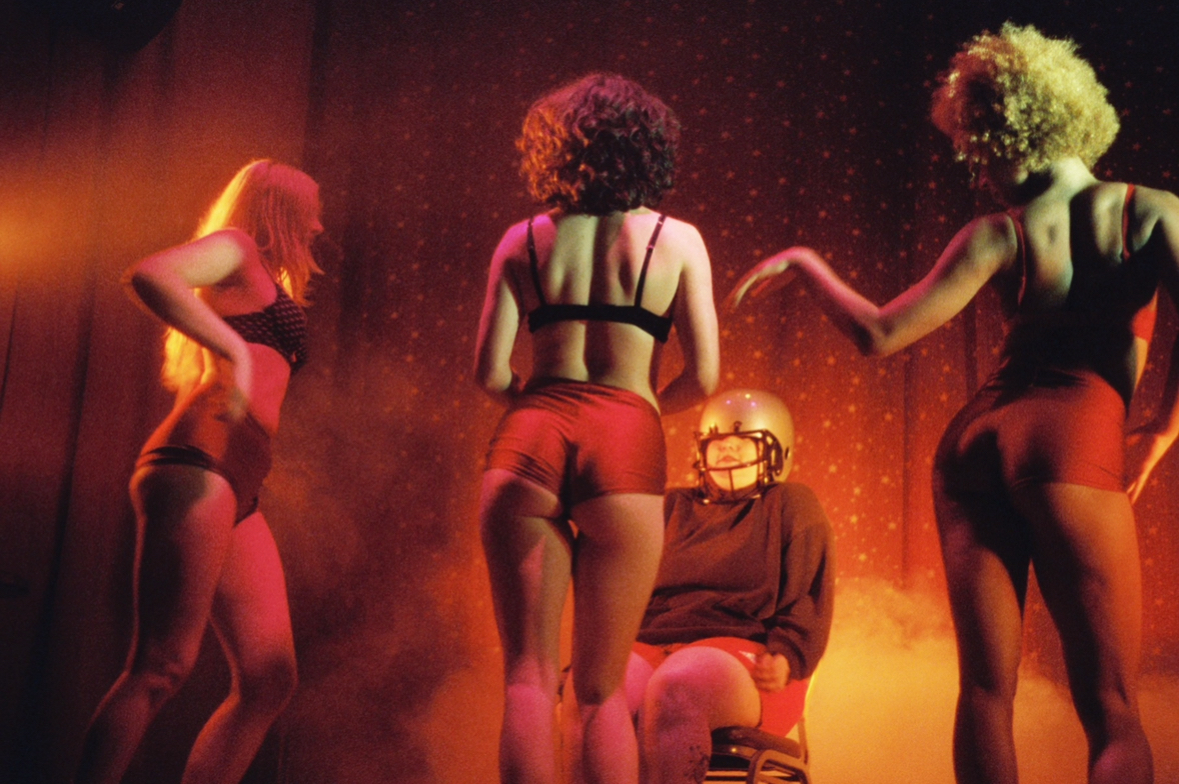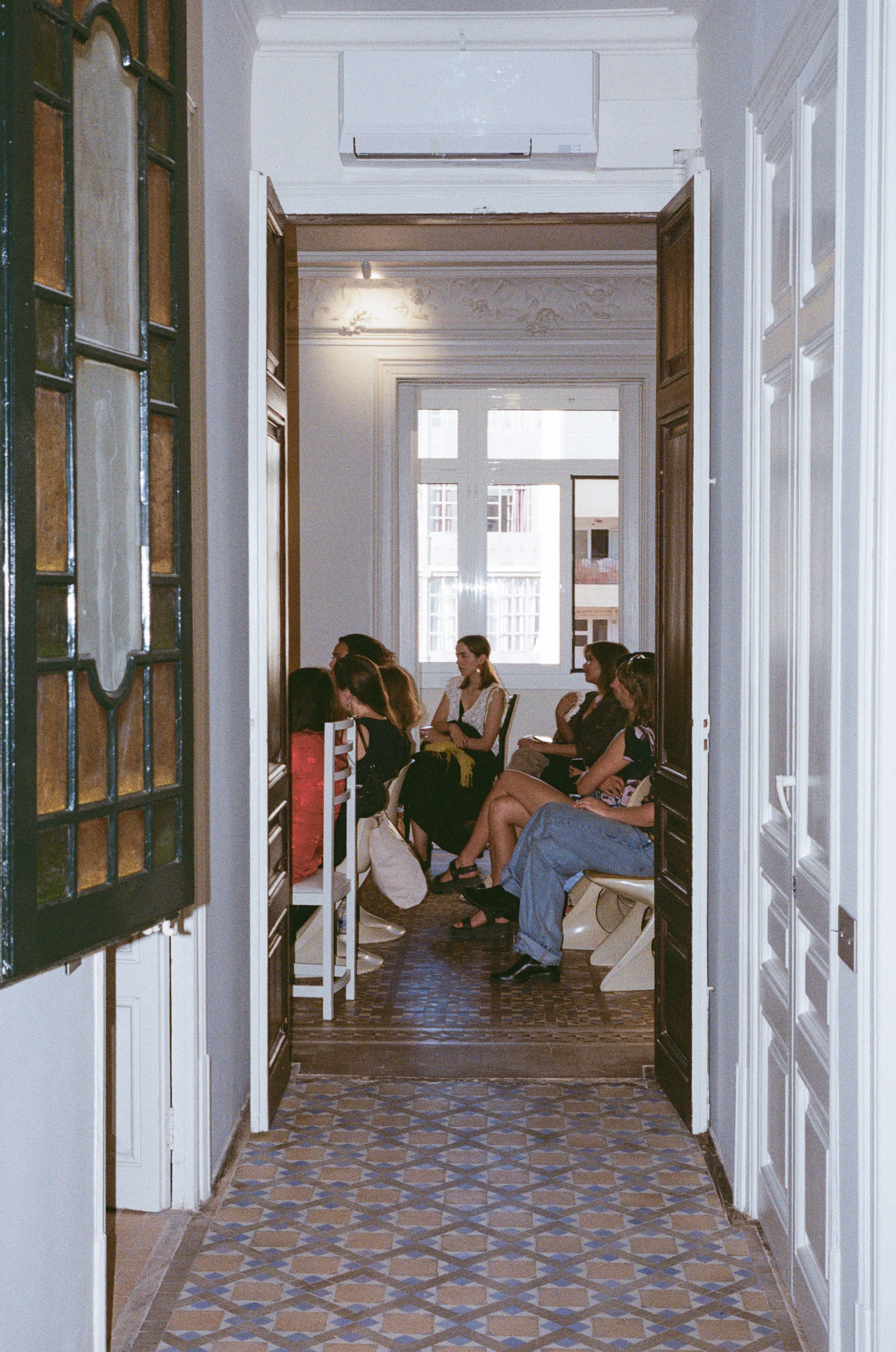Thank God for Lesbians

The affluent lesbian community she brought her business plan to thought the idea of putting “lesbian” on the cover was “a death sentence for any magazine,” she explained. So, at 22, with no credit history, she put on a nice suit, went to the bank, opened a bunch of credit cards, and cashed them all in––but still didn’t come up with enough to print the first edition. So she took that money to the horse races, and left with enough cash to print three editions of the magazine.
She turned to her community for collaboration, posting signs in the windows of A Different Light looking for photographers and writers, and got 300 calls within the month. But even the printing shop found the idea of a lesbian magazine profane, and wouldn’t work with her––so she got resourceful and found a porn printer in the Midwest. They were down to print the first editions of the magazine, then called Deneuve (after a copyright battle with Catherine Deneuve in 1996, it changed names to Curve). And after Stevens mailed copies out to bookstores around the country––some of whom didn’t buy her idea when she called ahead inquiring about interest––the first issue sold out across the US within a week.


The magazine continued to thrive through the ’90s and early 2000s, with articles spanning the broad scope of coverage Stevens wanted to see––politics, travel, pop-culture, identity and fashion as they related to queer life. It profiled lesbian icons, everyone from Melissa Etheridge and Ellen Degeneres in the early years, to, more recently, Kristen Stewart, Ellen Page and Daya. Every “The L Word” actress appeared on at least one cover. And by the early 2000s it was such a hallmark of lesbian culture that it was written into the show, with a Curve writer character giving Mia Kershner’s Jenny a bad review of her memoir.
But alongside all the celebrity profiles were pieces on regular queer folks doing great things in the community. What’s always set Curve apart from any other lesbian magazine is its equal prioritization of high-profile gay subjects and the everyday LGBTQ community––a mission that’s facilitated tangible visibility. Columns like ‘This is what a lesbian looks like,’ widened the cultural understanding of queer presentation, highlighting women of diverse looks, sizes, races and trades, and driving home the point that you don’t have to present a certain way to be queer or gay––a sentiment that’s still relevant today. “I was wearing what I considered the dyke uniform,” Stevens explained, “and part of my impetus for starting the magazine was I wanted to dispel that myth. We can see each other as queer women not because we wear a certain outfit or have a certain haircut. We shouldn’t have to justify ourselves.”


Featuring relatable queer women helped to normalize queerness, and created role models people like Stevens didn’t have growing up. “It was about visibility within our community, and then visibility for the outside world. Lesbians exist. And we don’t always look like what you think we look like.”
But after nearly 30 years, the magazine, like so many other print publications, is at a financial crossroads. And it’s not that we need outlets like Curve any less these days. While we’ve seen a surge in pop-culture visibility for gay women over the past year, with serious lesbian storylines finally making it into mainstream movies and TV shows, our fundamental rights as LGBTQ people are dangerously in flux. As politicians continuously take aim at our community’s wellbeing, the implications of a potential loss like this take on even more weight.
Stevens understood the importance of visibility and unity among LGBTQ people from the beginning. And without people like her insisting, in the face of relentless pushback, on normalizing LGBTQ life, queer culture as we know it would look very different. So while the future of the trailblazing magazine remains unclear, we do know some things; among them, that we can’t forget the stories of the LGBTQ people who kicked down doors before us, and as queer people, our work is never really done. In spite of the people who tell us ‘no,’ we have to continue carving out space in the world for ourselves, and for each other––like Franco did.
Catch 'Ahead of the Curve,' a documentary about Franco Stevens' legacy, in 2020, and see our favorite features and covers, below.
Images courtesy of 'Curve' magazine, used with permission of the publisher.




































































